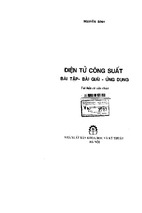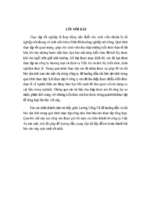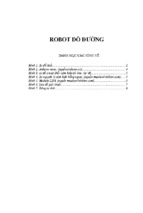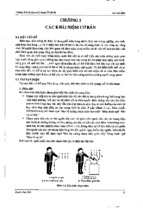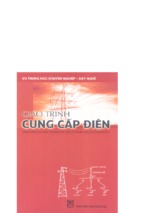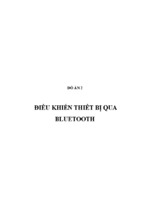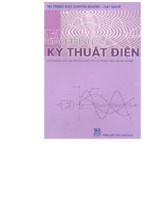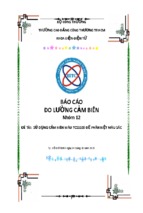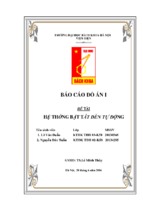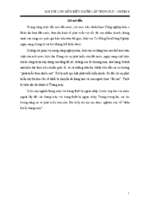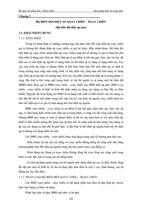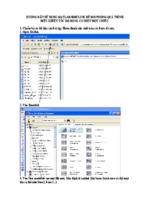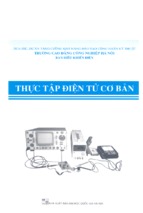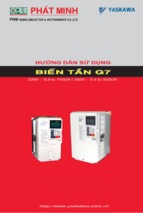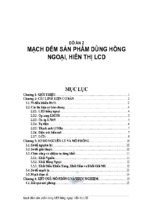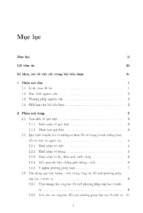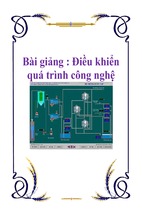Copyright 2010 Cengage Learning. All Rights Reserved. May not be copied, scanned, or duplicated, in whole or in part. Due to electronic rights, some third party content may be suppressed from the eBook and/or eChapter(s).
Editorial review has deemed that any suppressed content does not materially affect the overall learning experience. Cengage Learning reserves the right to remove additional content at any time if subsequent rights restrictions require it.
9781439061992_cvr_si_wkg.indd 2
13/08/10 2:48 PM
Copyright 2010 Cengage Learning. All Rights Reserved. May not be copied, scanned, or duplicated, in whole or in part. Due to electronic rights, some third party content may be suppressed from the eBook and/or eChapter(s).
Editorial review has deemed that any suppressed content does not materially affect the overall learning experience. Cengage Learning reserves the right to remove additional content at any time if subsequent rights restrictions require it.
9781439061992_cvr_si_wkg.indd 2
13/08/10 2:48 PM
61998_00_FM_pi-xviii.qxd
8/13/10
3:55 PM
Page i
CONVERSIONS BETWEEN U.S. CUSTOMARY UNITS AND SI UNITS
Times conversion factor
U.S. Customary unit
Equals SI unit
Accurate
Moment of inertia (area)
inch to fourth power
inch to fourth power
416,231
in.4
in.4
Practical
416,000
0.416231 ϫ
10Ϫ6
millimeter to fourth
power
meter to fourth power
mm4
m4
kilogram meter squared
kg·m2
watt (J/s or N·m/s)
watt
watt
W
W
W
47.9
6890
47.9
6.89
pascal (N/m2)
pascal
kilopascal
megapascal
Pa
Pa
kPa
MPa
16,400
16.4 ϫ 10Ϫ6
millimeter to third power
meter to third power
mm3
m3
meter per second
meter per second
meter per second
kilometer per hour
m/s
m/s
m/s
km/h
cubic meter
cubic meter
cubic centimeter (cc)
liter
cubic meter
m3
m3
cm3
L
m3
0.416 ϫ 10Ϫ6
Moment of inertia (mass)
slug foot squared
slug-ft2
1.35582
1.36
Power
foot-pound per second
foot-pound per minute
horsepower (550 ft-lb/s)
ft-lb/s
ft-lb/min
hp
1.35582
0.0225970
745.701
1.36
0.0226
746
Pressure; stress
pound per square foot
pound per square inch
kip per square foot
kip per square inch
psf
psi
ksf
ksi
Section modulus
inch to third power
inch to third power
in.3
in.3
Velocity (linear)
foot per second
inch per second
mile per hour
mile per hour
ft/s
in./s
mph
mph
Volume
cubic foot
cubic inch
cubic inch
gallon (231 in.3)
gallon (231 in.3)
ft3
in.3
in.3
gal.
gal.
47.8803
6894.76
47.8803
6.89476
16,387.1
16.3871 ϫ 10Ϫ6
0.3048*
0.0254*
0.44704*
1.609344*
0.0283168
16.3871 ϫ 10Ϫ6
16.3871
3.78541
0.00378541
0.305
0.0254
0.447
1.61
0.0283
16.4 ϫ 10Ϫ6
16.4
3.79
0.00379
*An asterisk denotes an exact conversion factor
Note: To convert from SI units to USCS units, divide by the conversion factor
Temperature Conversion Formulas
5
T(°C) ϭ ᎏ ᎏ[T(°F) Ϫ 32] ϭ T(K) Ϫ 273.15
9
5
T(K) ϭ ᎏ ᎏ[T(°F) Ϫ 32] ϩ 273.15 ϭ T(°C) ϩ 273.15
9
9
9
T(°F) ϭ ᎏ ᎏT(°C) ϩ 32 ϭ ᎏ ᎏT(K) Ϫ 459.67
5
5
Copyright 2010 Cengage Learning. All Rights Reserved. May not be copied, scanned, or duplicated, in whole or in part. Due to electronic rights, some third party content may be suppressed from the eBook and/or eChapter(s).
Editorial review has deemed that any suppressed content does not materially affect the overall learning experience. Cengage Learning reserves the right to remove additional content at any time if subsequent rights restrictions require it.
61998_00_FM_pi-xviii.qxd
8/13/10
3:55 PM
Page iii
MECHATRONICS
SYSTEM DESIGN
SECOND EDITION, SI
Devdas Shetty, Ph.D., P.E.
Dean of Research and Professor of Mechanical Engineering
University of Hartford
West Hartford, Connecticut
Richard A. Kolk
Sr. Vice President—Technology
PaceControls
Philadelphia, Pennsylvania
Australia • Brazil • Japan • Korea • Mexico • Singapore • Spain • United Kingdom • United States
Copyright 2010 Cengage Learning. All Rights Reserved. May not be copied, scanned, or duplicated, in whole or in part. Due to electronic rights, some third party content may be suppressed from the eBook and/or eChapter(s).
Editorial review has deemed that any suppressed content does not materially affect the overall learning experience. Cengage Learning reserves the right to remove additional content at any time if subsequent rights restrictions require it.
This is an electronic version of the print textbook. Due to electronic rights
restrictions, some third party content may be suppressed. Editorial
review has deemed that any suppressed content does not materially
affect the overall learning experience. The publisher reserves the
right to remove content from this title at any time if subsequent
rights restrictions require it. For valuable information on pricing, previous
editions, changes to current editions, and alternate formats, please visit
www.cengage.com/highered to search by ISBN#, author, title, or keyword
for materials in your areas of interest.
Copyright 2010 Cengage Learning. All Rights Reserved. May not be copied, scanned, or duplicated, in whole or in part. Due to electronic rights, some third party content may be suppressed from the eBook and/or eChapter(s).
Editorial review has deemed that any suppressed content does not materially affect the overall learning experience. Cengage Learning reserves the right to remove additional content at any time if subsequent rights restrictions require it.
61998_00_FM_pi-xviii.qxd
8/13/10
3:55 PM
Mechatronics System Design,
Second Edition, SI
Devdas Shetty and Richard A. Kolk
Publisher, Global Engineering:
Christopher M. Shortt
Senior Acquisitions Editor: Swati Merehishi
Senior Developmental Editor: Hilda Gowans
Editorial Assistant: Tanya Altieri
Team Assistant: Carly Rizzo
Marketing Manager: Lauren Betsos
Media Editor: Chris Valentine
Senior Content Project Manager:
Colleen Farmer
Production Service: RPK Editorial Services
Copyeditor: Shelly Gerger-Knechtl
Proofreaders: Erin Wagner/Martha
McMaster
Indexer: Shelly Gerger-Knechtl
Compositor: Integra Software Services
Senior Art Director: Michelle Kunkler
Cover Designer: Andrew Adams
Cover Images: © Yanir Taflov/Shutterstock
Permissions Account Manager: Mardell
Glisnski Schultz
Text and Image Permissions Researcher:
Kristiina Paul
First Print Buyer: Arethea Thomas
Page iv
© 2011, 1997 Cengage Learning
ALL RIGHTS RESERVED. No part of this work covered by the
copyright herein may be reproduced, transmitted, stored, or used
in any form or by any means graphic, electronic, or mechanical,
including but not limited to photocopying, recording, scanning,
digitizing, taping, web distribution, information networks,
or information storage and retrieval systems, except as permitted
under Section 107 or 108 of the 1976 United States Copyright Act,
without the prior written permission of the publisher.
For product information and technology assistance,
contact us at Cengage Learning Customer &
Sales Support, 1-800-354-9706.
For permission to use material from this text or product,
submit all requests online at www.cengage.com/permissions.
Further permissions questions can be emailed to
[email protected]
Library of Congress Control Number: 2010932699
International Student Edition
ISBN-13: 978-1-4390-6199-2
ISBN-10: 1-4390-6199-8
Cengage Learning
200 First Stamford Place, Suite 400
Stamford, CT 06902
USA
Cengage Learning is a leading provider of customized learning
solutions with office locations around the globe, including
Singapore, the United Kingdom, Australia, Mexico, Brazil, and Japan.
Locate your local office at: international.cengage.com/region.
Cengage Learning products are represented in Canada by Nelson
Education Ltd.
For your course and learning solutions, visit
www.cengage.com/engineering.
Purchase any of our products at your local college store or at our
preferred online store www.Cengagebrain.com.
LabVIEW is a registered trademark of National Instruments
Corporation, 11500 N. Mopac Expressway, Austin TX.
MATLAB is a registered trademark of The MathWorks, 3 Apple Hill
Road, Natick, MA.
VisSim is a trademark of Visual Solutions, Incorporated, 487
Groton Road, Westford, MA.
Printed in the United States of America
1 2 3 4 5 6 7 14 13 12 11 10
Copyright 2010 Cengage Learning. All Rights Reserved. May not be copied, scanned, or duplicated, in whole or in part. Due to electronic rights, some third party content may be suppressed from the eBook and/or eChapter(s).
Editorial review has deemed that any suppressed content does not materially affect the overall learning experience. Cengage Learning reserves the right to remove additional content at any time if subsequent rights restrictions require it.
61998_00_FM_pi-xviii.qxd
8/13/10
3:55 PM
Page v
To my wife, Sandya, and sons, Jagat and Nandan, for their
love and support.
Devdas Shetty
To my wife, Cathie; daughters, Emily and Elizabeth;
and E. Gloria MacKintosh for her encouragement
Ric Kolk
Copyright 2010 Cengage Learning. All Rights Reserved. May not be copied, scanned, or duplicated, in whole or in part. Due to electronic rights, some third party content may be suppressed from the eBook and/or eChapter(s).
Editorial review has deemed that any suppressed content does not materially affect the overall learning experience. Cengage Learning reserves the right to remove additional content at any time if subsequent rights restrictions require it.
1019763_FM_VOL-I.qxp
9/17/07
1
2
3
4
5
6
7
8
9
10
11
12
13
14
15
16
17
18
19
20
21
22
23
24
25
26
27
28
29
30
31
32
33
34
35
36
37
38
39
40
41
42
43
44
45
46
47
48
49
S 50
R 51
4:22 PM
Page viii
This page was intentionally left blank
1st Pass Pages
1019763_FM_VOL-I.qxp
9/17/07
1
2
3
4
5
6
7
8
9
10
11
12
13
14
15
16
17
18
19
20
21
22
23
24
25
26
27
28
29
30
31
32
33
34
35
36
37
38
39
40
41
42
43
44
45
46
47
48
49
S 50
R 51
4:22 PM
Page viii
This page was intentionally left blank
1st Pass Pages
61998_00_FM_pi-xviii.qxd
8/13/10
3:55 PM
Page vii
CONTENTS
1
MECHATRONICS SYSTEM DESIGN 1
1.1
What is Mechatronics 1
1.2
Integrated Design Issues in Mechatronics 4
1.3
The Mechatronics Design Process 6
1.4
Mechatronics Key Elements 10
1.5
Applications in Mechatronics 18
1.6
Summary 39
References 39
Problems 40
2
MODELING AND SIMULATION OF PHYSICAL SYSTEMS 41
2.1
Operator Notation and Transfer Functions 42
2.2
Block Diagrams, Manipulations, and Simulation 43
2.3
Block Diagram Modeling—Direct Method 51
2.4
Block Diagram Modeling—Analogy Approach 64
2.5
Electrical Systems 75
2.6
Mechanical Translational Systems 82
2.7
Mechanical Rotational Systems 90
2.8
Electrical–Mechanical Coupling 95
2.9
Fluid Systems 102
2.10
Summary 116
References 117
Problems 118
Appendix to Chapter 2 123
Copyright 2010 Cengage Learning. All Rights Reserved. May not be copied, scanned, or duplicated, in whole or in part. Due to electronic rights, some third party content may be suppressed from the eBook and/or eChapter(s).
Editorial review has deemed that any suppressed content does not materially affect the overall learning experience. Cengage Learning reserves the right to remove additional content at any time if subsequent rights restrictions require it.
61998_00_FM_pi-xviii.qxd
viii
8/13/10
3:55 PM
Page viii
Contents
3
SENSORS AND TRANSDUCERS 131
3.1
Introduction to Sensors and Transducers 132
3.2
Sensitivity Analysis—Influence of Component Variation 139
3.3
Sensors for Motion and Position Measurement 144
3.4
Digital Sensors for Motion Measurement 162
3.5
Force, Torque, and Tactile Sensors 168
3.6
Vibration—Acceleration Sensors 183
3.7
Sensors for Flow Measurement 195
3.8
Temperature Sensing Devices 210
3.9
Sensor Applications 216
3.10
Summary 246
References 246
Problems 247
4
ACTUATING DEVICES 255
4.1
Direct Current Motors 255
4.2
Permanent Magnet Stepper Motor 262
4.3
Fluid Power Actuation 269
4.4
Fluid Power Design Elements 274
4.5
Piezoelectric Actuators 287
4.6
Summary 289
References 289
Problems 289
5
SYSTEM CONTROL—LOGIC METHODS 291
5.1
Number Systems in Mechatronics 291
5.2
Binary Logic 297
5.3
Karnaugh Map Minimization 302
5.4
Programmable Logic Controllers 309
5.5
Summary 321
References 321
Problems 322
6
SIGNALS, SYSTEMS, AND CONTROLS 329
6.1
6.2
6.3
6.4
6.5
Introduction to Signals, Systems, and Controls 329
Laplace Transform Solution of Ordinary Differential Equations 332
System Representation 338
Linearization of Nonlinear Systems 343
Time Delays 346
Copyright 2010 Cengage Learning. All Rights Reserved. May not be copied, scanned, or duplicated, in whole or in part. Due to electronic rights, some third party content may be suppressed from the eBook and/or eChapter(s).
Editorial review has deemed that any suppressed content does not materially affect the overall learning experience. Cengage Learning reserves the right to remove additional content at any time if subsequent rights restrictions require it.
61998_00_FM_pi-xviii.qxd
8/13/10
3:55 PM
Page ix
Contents
ix
6.6
Measures of System Performance 349
6.7
Root Locus 357
6.8
Bode Plots 370
6.9
Controller Design Using Pole Placement Method 378
6.10
Summary 383
References 383
Problems 383
7
SIGNAL CONDITIONING AND REAL TIME INTERFACING 387
7.1
Introduction 387
7.2
Elements of a Data Acquisition and Control System 388
7.3
Transducers and Signal Conditioning 392
7.4
Devices for Data Conversion 394
7.5
Data Conversion Process 402
7.6
Application Software 409
7.7
Summary 445
References 445
8
CASE STUDIES 446
8.1
Comprehensive Case Studies 446
8.2
Data Acquisition Case Studies 466
8.3
Data Acquisition and Control Case Studies 476
8.4
Summary 489
References 489
Problems 490
APPENDIX 1 DATA ACQUISITION CARDS 491
INDEX 493
Copyright 2010 Cengage Learning. All Rights Reserved. May not be copied, scanned, or duplicated, in whole or in part. Due to electronic rights, some third party content may be suppressed from the eBook and/or eChapter(s).
Editorial review has deemed that any suppressed content does not materially affect the overall learning experience. Cengage Learning reserves the right to remove additional content at any time if subsequent rights restrictions require it.
61998_00_FM_pi-xviii.qxd
8/13/10
3:55 PM
Page x
PREFACE TO THE SI EDITION
This edition of Mechatronics System Design, has been adapted to incorporate the International
System of Units (Le Système International d’Unités or SI) throughout the book.
Le Système Internationités
The United States Customary System (USCS) of units uses FPS (foot-pound-second) units (also
called English or Imperial units). SI units are primarily the units of the MKS (meter-kilogramsecond) system. However, CGS (centimeter-gram-second) units are often accepted as SI units, especially in textbooks.
Using SI Units in this Book
In this book, we have used both MKS and CGS units. USCS units or FPS units used in the US
Edition of the book have been converted to SI units throughout the text and problems. However, in
case of data sourced from handbooks, government standards, and product manuals, it is not only
extremely difficult to convert all values to SI, it also encroaches upon the intellectual property of
the source. Some data in figures, tables, and references, therefore, remains in FPS units. For readers unfamiliar with the relationship between the FPS and the SI systems, a conversion table has been
provided inside the front cover.
To solve problems that require the use of sourced data, the sourced values can be converted from
FPS units to SI units just before they are to be used in a calculation. To obtain standardized quantities and manufacturers’ data in SI units, the readers may contact the appropriate government
agencies or authorities in their countries/regions.
Instructor Resources
The Instructors’ Solution Manual in SI units is available through your Sales Representative or
online through the book website at www.cengage.com/engineering.
The readers’ feedback on this SI Edition will be highly appreciated and will go a long way in helping us improve subsequent editions.
The Publishers
Copyright 2010 Cengage Learning. All Rights Reserved. May not be copied, scanned, or duplicated, in whole or in part. Due to electronic rights, some third party content may be suppressed from the eBook and/or eChapter(s).
Editorial review has deemed that any suppressed content does not materially affect the overall learning experience. Cengage Learning reserves the right to remove additional content at any time if subsequent rights restrictions require it.
61998_00_FM_pi-xviii.qxd
8/13/10
3:55 PM
Page xi
PREFACE
Competing in a globalized market requires the adaptation of modern technology to yield flexible,
multifunctional products that are better, cheaper, and more intelligent than those currently on the
shelf. The importance of mechatronics is evidenced by the myriad of smart products that we take
for granted in our daily lives, from the cruise control feature in our cars to advanced flight control
systems and from washing machines to multifunctional precision machines. The technological
advances in digital engineering, simulation and modeling, electromechanical motion devices, power
electronics, computers and informatics, MEMS, microprocessors, and DSPs have brought new challenges to industry and academia.
Mechatronics is the synergistic combination of mechanical and electrical engineering, computer science, and information technology, which includes the use of control systems as well as
numerical methods to design products with built-in intelligence.
The field of mechatronics allows the engineer to integrate mechanical, electronics, control
engineering and computer science into a product design process. Modeling, simulation, analysis,
virtual prototyping and visualization are critical aspects of developing advanced mechatronics products. Mechatronics design focuses on systematic optimization to ensure that quality products are
created in a timely fashion. Getting electromechanical design right the first time requires teamwork and coordination across multiple segments and disciplines of the engineering process. The
integration is facilitated by the introduction of new software simulation tools that work in tandem
with systems to create an efficient mechatronics pathway.
The first edition of this book was designed for the upper-level undergraduate or graduate student in mechanical, electrical, industrial, biomedical, computer, and of course, mechatronics
engineering. The book was widely used in the United States and also in Canada, China, Europe,
India, and South Korea. Following feedback from experts in this field and also from the faculty
who used this text book, the second edition has been considerably extended and augmented with
extra depth so that not only is it still relevant for its original users, but is also apt for other emerging programs.
Currently, there exists a trend to include mechatronics in the traditional curricula with the purpose of providing integrated design experience to graduating engineers. This experience is created
by using measurement principles, sensors, actuators, electronics circuits, and real-time interfacing
coupled with design, simulation, and modeling. Some of these courses end with case studies and a
Copyright 2010 Cengage Learning. All Rights Reserved. May not be copied, scanned, or duplicated, in whole or in part. Due to electronic rights, some third party content may be suppressed from the eBook and/or eChapter(s).
Editorial review has deemed that any suppressed content does not materially affect the overall learning experience. Cengage Learning reserves the right to remove additional content at any time if subsequent rights restrictions require it.
61998_00_FM_pi-xviii.qxd
xii
8/13/10
3:55 PM
Page xii
Preface
unifying design project that integrates various disciplines into a successful design product that can
be quickly assembled and analyzed in a laboratory environment.
This second edition has been updated throughout. The aim is to provide a comprehensive coverage of many areas so that the readers understand the range of engineering disciplines that come
together to form the field of mechatronics. The interdisciplinary approach taken in this book provides the technical background needed in the design of mechatronics products.
The second edition is designed to serve as a text for the following:
•
Stand-alone mechatronics courses.
•
Modern instrumentation and measurement courses.
•
Hybrid electrical and mechanical engineering course covering sensors, actuators, dataacquisition, and control.
•
Interdisciplinary engineering courses dealing with modeling, simulation, and control.
Key Features
•
Extensive coverage of sensors, actuators, system modeling, and classical control system
design coupled with real-time computer interfacing.
•
Industrial case studies.
•
Ιn-depth discussions on modeling and simulation of physical systems.
•
Inclusion of block diagrams, modified analogy approach to modeling, and the use of stateof-the-art visual simulation software.
•
Shows how interactive modeling created in a graphical environment with visual representation is crucial to the design process.
•
Step-by-step mechatronics system design methodology.
•
Illustration of how the design process can be done right the first time.
New to This Edition
•
Numerous design examples and end-of-chapter problems added to help students understand the basic mechatronics methodology.
•
A simple motion control example carried out throughout the eight chapters covering the
different elements of mechatronics systems progressively.
•
Simulation and real-time interfacing using LabVIEW® included in addition to VisSim™.
•
Inclusion of current trends in mechatronics and smart manufacturing.
•
Illustration of block diagram approach and emphasis on the comprehensive use of mathematical analysis, simulation and modeling, control and real-time interfacing in implementing case studies.
•
Expanded coverage of sensors, real-time interfacing, and multiple input and multiple output systems.
•
Design examples and problems drawn from situations encountered in everyday life.
Copyright 2010 Cengage Learning. All Rights Reserved. May not be copied, scanned, or duplicated, in whole or in part. Due to electronic rights, some third party content may be suppressed from the eBook and/or eChapter(s).
Editorial review has deemed that any suppressed content does not materially affect the overall learning experience. Cengage Learning reserves the right to remove additional content at any time if subsequent rights restrictions require it.
61998_00_FM_pi-xviii.qxd
8/13/10
3:55 PM
Page xiii
Preface
•
Illustration of synergistic aspects of mechatronics and its influence in design.
•
Hardware-in-the-loop examples and illustration of optimum design.
•
Control system analysis for multiple input and multiple output situations.
•
Complete illustration of permanent magnet DC motor integrated with hall effect sensor, its
mathematical analysis, and position control.
•
xiii
Creation of virtual prototype of mechatronics systems.
Chapter 1 provides an in-depth discussion of the key issues in the mechatronics design process
and examines emerging trends. In addition, this chapter addresses recent advances of mechatronics
in smart manufacturing and discusses the improvements to conventional designs by using a mechatronics approach.
Chapter 2 is devoted entirely to system modeling and simulation. Students will learn to create
accurate computer-based dynamic models from illustrations and other information using the
modified analogy approach. The procedure for converting a transfer function to a block diagram
model is presented in this section as a six-step process. This unique method combines the standard
analogy approach to modeling with block diagrams, the major difference being the ability to
incorporate nonlinearities directly without bringing in linearization. Chapter 2 addresses a variety
of physical systems often found in mechatronics. Such systems include mechanical, electrical,
thermal, fluid, and hydraulic components. Models and techniques developed in this chapter are used
in subsequent chapters in the chronology of the mechatronics design process.
Chapter 3 presents the basic theoretical concepts of sensors and transducers. The topics include
instrumentation principles, analog and digital sensors, sensors for position, force, and vibration, and
sensors for temperature, flow, and range.
Chapter 4 discusses several types of actuating devices, including DC motors, stepper motors,
fluid power devices and piezoelectric actuators.
Chapter 5 looks at system control and logic methods. This includes fundamental aspects of digital techniques, digital theory such as Boolean logic, analog and digital electronics, and programmable logic controllers.
Chapter 6 presents controls and their design for use in mechatronics systems. Special attention is
paid to real-world constraints, including time delays and nonlinearities. The Root Locus and Bode
Plot design methods are discussed in detail, along with several design procedures for common control structures, including PI, PD, PID, lag, lead, and pure gain.
Chapter 7 discusses the theoretical and practical aspects of real-time data acquisition. Signal processing and data interpretation are handled using the visual programming approach. Several examples using LabVIEW and VisSim are presented. A case study involving pulse width modulation of
a PI controller output of the PM DC Gear Motor Position Control System is also presented.
Chapter 8 presents a collection of case studies suitable for laboratory investigations. All case studies are implemented using a general purpose I/O board, visual simulation environment, and application software. The key aspect of the graphical environments is that the visual representation of
system partitioning and interaction lends itself to mechatronics applications.
Copyright 2010 Cengage Learning. All Rights Reserved. May not be copied, scanned, or duplicated, in whole or in part. Due to electronic rights, some third party content may be suppressed from the eBook and/or eChapter(s).
Editorial review has deemed that any suppressed content does not materially affect the overall learning experience. Cengage Learning reserves the right to remove additional content at any time if subsequent rights restrictions require it.
61998_00_FM_pi-xviii.qxd
xiv
8/13/10
3:55 PM
Page xiv
Preface
The combination of class discussions, simulation projects, and laboratory experimental design
exposes the students to a practical platform of mechatronics. The real challenge in writing this book
has been to connect complex and seemingly independent topics in a clear and concise manner,
which is necessary for the understanding of mechatronics. The users of the book are requested to
give feedback for further improvement of the text.
For students: Instructions for downloading the VisSim trial version can be found by visiting the
textbook’s student companion site. Please visit www.cengage.com/engineering/shetty for more
information.
For instructors: Additional resources can be found on the textbook’s instructor companion site.
Please visit www.cengage.com/engineering/shetty for more information.
Copyright 2010 Cengage Learning. All Rights Reserved. May not be copied, scanned, or duplicated, in whole or in part. Due to electronic rights, some third party content may be suppressed from the eBook and/or eChapter(s).
Editorial review has deemed that any suppressed content does not materially affect the overall learning experience. Cengage Learning reserves the right to remove additional content at any time if subsequent rights restrictions require it.
61998_00_FM_pi-xviii.qxd
8/13/10
3:55 PM
Page xv
ACKNOWLEDGMENTS
The material presented in this book is a collection of many years of research and teaching by the
authors at the University of Hartford, Cooper Union, and Lawrence Technological University as
well as the insight gained from working closely with industry affiliates such as United
Technologies, McDonnell Douglas, and many others.
Many have contributed greatly, in reviewing the manuscript. We wish to acknowledge the hundreds of students from the classes in which we have tested the teaching material. We are grateful to
a number of professors whose comments and suggestions at various stages of this project were helpful in revising the manuscript. We would like to acknowledge Prof. Claudio Campana of University
of Hartford, Prof. Ridha Ben Mrad of University of Toronto, Prof. M.K. Ramasubramanian of North
Carolina State University, and George Thomas of Lawrence Technological University.
Special thanks to Dr. Walter Harrison, President of the University of Hartford; Dr. Lewis
Walker, President of Lawrence Technological University; Dr. Donna Randall, President of the
Albion College; Dr. Maria Vaz, Provost of Lawrence Technological University; and Dean Lou
Manzione and Dr. Ivana Milanovic of the University of Hartford for their encouragement. We thank
Visual Solutions, Inc. and National Instruments Inc. for their assistance with the real-time interfacing portion of the text.
Funding from the National Science Foundation and United Technologies Mechatronics Grant
is gratefully acknowledged. The tremendous support and encouragement that we have received
from our colleagues has been invaluable.
Devdas Shetty
Richard Kolk
Copyright 2010 Cengage Learning. All Rights Reserved. May not be copied, scanned, or duplicated, in whole or in part. Due to electronic rights, some third party content may be suppressed from the eBook and/or eChapter(s).
Editorial review has deemed that any suppressed content does not materially affect the overall learning experience. Cengage Learning reserves the right to remove additional content at any time if subsequent rights restrictions require it.
61998_00_FM_pi-xviii.qxd
8/13/10
3:55 PM
Page xvii
MECHATRONICS
SYSTEM DESIGN
SECOND EDITION, SI
Copyright 2010 Cengage Learning. All Rights Reserved. May not be copied, scanned, or duplicated, in whole or in part. Due to electronic rights, some third party content may be suppressed from the eBook and/or eChapter(s).
Editorial review has deemed that any suppressed content does not materially affect the overall learning experience. Cengage Learning reserves the right to remove additional content at any time if subsequent rights restrictions require it.

